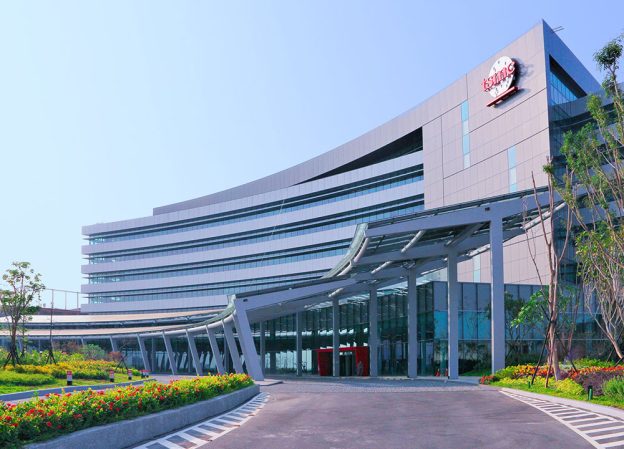Bernie Malouin is a technical professional with demonstrated experience from concept studies through system deployment. He has a strong track record working in dynamic environments, from highly complex, multi-million dollar development programs to deeply technical research projects. He founded JetCool Technologies … Read More
 A Six-Minute Journey to Secure Chip Design with CaspiaHardware-level chip security has become an important topic…Read More
A Six-Minute Journey to Secure Chip Design with CaspiaHardware-level chip security has become an important topic…Read More Lessons from the DeepChip Wars: What a Decade-old Debate Teaches Us About Tech EvolutionThe competitive landscape of hardware-assisted verification (HAV) has…Read More
Lessons from the DeepChip Wars: What a Decade-old Debate Teaches Us About Tech EvolutionThe competitive landscape of hardware-assisted verification (HAV) has…Read More Think Quantum Computing is Hype? Mastercard Begs to DisagreeJust got an opportunity to write a blog…Read More
Think Quantum Computing is Hype? Mastercard Begs to DisagreeJust got an opportunity to write a blog…Read More TSMC Kumamoto: Pioneering Japan's Semiconductor RevivalIn the lush landscapes of Kumamoto Prefecture, on…Read More
TSMC Kumamoto: Pioneering Japan's Semiconductor RevivalIn the lush landscapes of Kumamoto Prefecture, on…Read MoreWebinar – The Path to Smaller, Denser, and Faster with CPX, Samtec’s Co-Packaged Copper and Optics
For markets such as data center, high-performance computing, networking and AI accelerators the battle cry is often “copper is dead”. The tremendous demands for performance and power efficiency often lead to this conclusion. As is the case with many technology topics, things are not always the way they seem. It turns out a lot … Read More
Webinar – IP Design Considerations for Real-Time Edge AI Systems
It is well-known that semiconductor growth is driven by AI. That simple statement breaks down into many complex use cases, each with its own requirements and challenges. A webinar will be presented by Synopsys on October 23 that focuses on the specific requirements for one of the most popular use cases – AI at the edge. The speaker… Read More
WEBINAR: Design and Stability Analysis of GaN Power Amplifiers using Advanced Simulation Tools
Why should high frequency circuit designers consider stability early in the design process? Isn’t there enough to worry about just making the circuit function at the fundamental frequency?
In the past, Microwave Engineers used to solve stability problems in the lab, perhaps adding bypassing or loss in a strategic location to… Read More
Visualizing hidden parasitic effects in advanced IC design
By Omar Elabd
As semiconductor designs move below 7 nm, parasitic effects—resistance, capacitance and inductance—become major threats to IC performance and reliability, often hiding where netlist reviews cannot reach. Design teams need advanced visualization tools like heat maps, layer-based analysis and direct layout… Read More
Statically Verifying RTL Connectivity with Synopsys
Many years ago, not long after we first launched SpyGlass, I was looking around for new areas where we could apply static verification methods and was fortunate to meet Ralph Marlett, a guy (now friend) with extensive experience in DFT. Ralph joined us and went on to build the very capable SpyGlass DFT app. So capable that SpyGlass… Read More
Assertion IP (AIP) for Improved Design Verification
Over the years design reuse methodology created a market for Semiconductor IP (SIP), now with formal techniques there’s a need for Assertion IP (AIP). Where each AIP is a reusable and configurable verification component used in hardware design to detect protocol and functional violations in a Design Under Test (DUT). LUBIS … Read More
Secure-IC and Silicon Labs Raise the Bar for Hardware Security
Cybersecurity is getting more critical every day. Thanks to sophisticated AI attacks, the need for hardware chip-level security is greater than ever. To fortify hardware against these types of attacks is not easy. There are three key attributes of a successful strategy: a well-designed root-of-trust, collaboration to ensure… Read More
Why Choose PCIe 5.0 for Power, Performance and Bandwidth at the Edge?
Synopsys recently held a webinar session on this topic and Gustavo Pimentel, Principal Product Marketing Manager at the company led the webinar session. Going into the webinar session, I found myself wondering: why focus on PCIe 5.0, eight years after its release? With the industry buzzing about Edge AI, cloud computing, and … Read More
Protect against ESD by ensuring latch-up guard rings
By Mark Tawfik
Overview: Protecting ICs from costly ESD and latch-up failures
Electrostatic discharge (ESD) events cost the semiconductor industry an estimated $8 billion annually in lost productivity, warranty claims and product failures [1].
Ensuring the robust protection of integrated circuits (ICs) against various… Read More







![[white paper] Parasitic Analysis Figures](https://semiwiki.com/wp-content/uploads/2025/10/Fig1-net-level-visualization-150x127.jpg)



AI RTL Generation versus AI RTL Verification